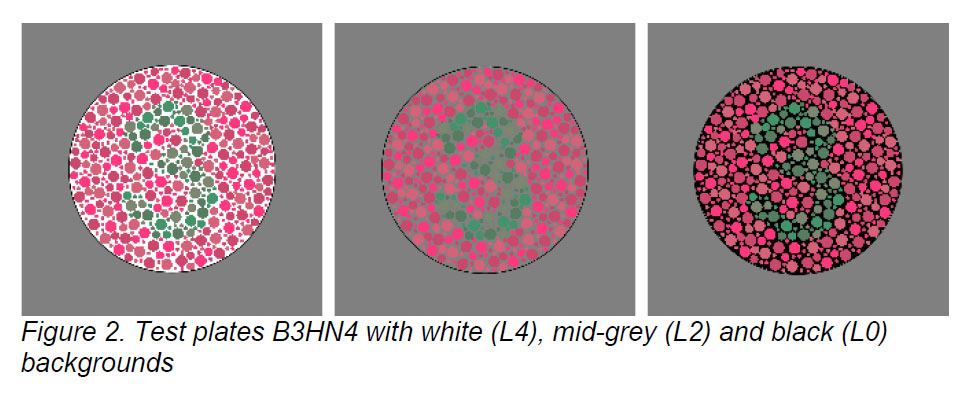
Pseudo-isochromatic plates with varying background lightness were used in a display-based colour vision experiment. As in previous work, the background was found to have a small effect on the ability of observers to identify the patterns on the plates. The time taken to recognize the patterns was significantly affected for both colour-normal and colour vision deficient observers, with darker backgrounds associated with shorter response times and white backgrounds having the longest response times, suggesting a greater degree of task difficulty. Possible reasons for the results when test plates were presented with a white background are suggested, including lower apparent colourfulness and greater difficulty in visual integration of the figure.

Observers with a colour vision deficiency usually find it more difficult to discriminate between red and green colours, due to genetic variation in cone spectral sensitivity. Daltonization methods aim to enhance colour stimuli in order to increase the visual difference between them for such observers. In this work we focus on filtering the stimulus in the reflectance domain prior to conversion to colorimetry. This is hypothesized to enable a more precise tuning of the enhancement to the spectral absorptions of the observer with a colour vision deficiency. A spectral sharpening filter was developed and applied to spectral reflectances for a range of colour pairs which observers with a colour vision deficiency would be expected to find difficult to discriminate. The reflectance pairs were converted to colorimetry and presented on a colour display, where the visual difference between the pairs was evaluated by observers in a psychophysical experiment. Results suggest that a suitable filter can lead to an increase in the difference between the red-green pairs.